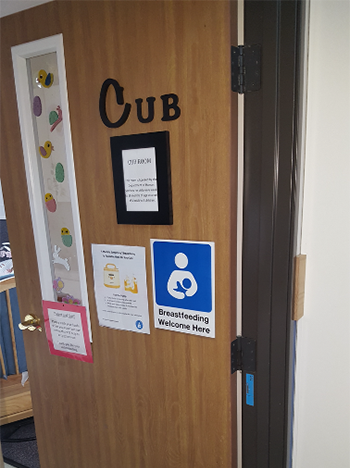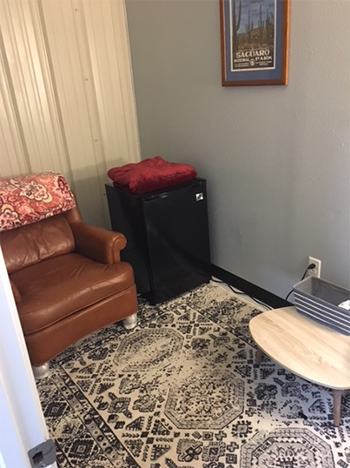Legal and policy approaches can be important tools for achieving healthier communities. A new report—The Role of Law and Policy in Assisting Families to Reach Healthy People’s Maternal, Infant, and Child Health Breastfeeding Goals in the United States—provides evidence-based information and identifies priority areas that can help communities achieve Healthy People objectives.
This Bright Spot describes Boulder County Public Health’s efforts to help Colorado families meet their breastfeeding goals.
Challenge: Families aren’t meeting their breastfeeding goals
Breastfeeding has significant health benefits for babies and new mothers. The American Academy of Pediatrics recommends that families exclusively breastfeed their babies for the first 6 months after birth, and continue breastfeeding for at least the first 12 months.1
But breastfeeding rates in the United States fall short—both in terms of how long families typically breastfeed exclusively and how long they breastfeed overall. Among babies born in 2015, about 25% were exclusively breastfed through 6 months. Only about 35% were breastfeeding at all by 12 months.2
Despite these numbers, nearly 80% of babies started out breastfeeding originally. This high initiation rate suggests that most families in the United States who are able to breastfeed want to breastfeed, but that they may not get the support they need to meet their goals.3
Strategy: Use policy to support families
Breastfeeding trends in Boulder County, Colorado, are similar to what the national data show. Initiation rates are high, but many families stop breastfeeding relatively quickly—between 6 to 12 weeks. And families with lower incomes and education levels may be especially likely to stop breastfeeding early, largely because they need to go back to work or school.
"Those initiation rates indicate a strong intention to breastfeed," says Linda Kopecky, Breastfeeding-Friendly Environment Coordinator at Boulder County Public Health (BCPH). So when the BCPH team set out to increase breastfeeding in Boulder County, they decided to focus on families who clearly want to breastfeed.
Kopecky cites a number of reasons that families who are able to breastfeed don’t meet their goals. One is that health care providers or loved ones may encourage new parents to introduce formula early—sometimes even before leaving the hospital. If parents have concerns about breastfeeding, or if they’re already struggling with it, early use of formula can make it difficult for women to maintain their milk supply. "Eventually," adds BCPH Program Coordinator Sarah Scully, "they stop trying."
But families run into problems in other settings, too. For example, BCPH has found that some childcare providers—specifically in toddler rooms—are hesitant to handle breastmilk. There are a few reasons for this, including the misconception that breastmilk can spread illness. Since there’s no clear state policy about breastmilk in toddler rooms, childcare providers in those settings are able to ban it—making it difficult for parents to continue giving their children breastmilk.
Kopecky says this fear is symptomatic of the larger problem they’ve encountered in their work: without clear policies, people try to fill the gaps. "Where there are gaps in policy and law, people fill in with their own experience and their own information,” she says. "It may not be based on actual best practices—or even concrete information."
That’s why BCPH helps childcare and health care providers, employers, and people who manage public spaces create their own breastfeeding-friendly policies by developing templates and providing technical assistance. For example, BCPH might help an employer develop a policy that provides specific time and space for employees to breastfeed.
Photos of breastfeeding-friendly rooms. Photos courtesy of Boulder County Public Health.
In addition, BCPH has partnered with the Colorado Health Institute (CHI) and several other Colorado county health departments to share various models designed to promote breastfeeding. While state-level programs to designate breastfeeding-friendly environments are fairly common, these programs are more rare at the county level. BCPH’s partnership with CHI challenges that convention by working at the county level to develop guidelines for creating breastfeeding-friendly recognition programs that are tailored to specific communities.
Beginning the work at the county level and leveraging local partnerships is at the heart of BCPH’s strategy. Kopecky says they’re moving away from a more traditional cookie-cutter model—one developed at the state level that’s expected to work in every single county. BCPH’s model is developed for local communities at the local level.
"You're developing it with the people in your community, for the people in your community, based on your norms, your needs, your culture," she said. "That's going to be more sustainable, more relevant—and there's going to be more buy-in at the community level."
Impact: Paving the way for success
Kopecky and Scully say that the culture around breastfeeding in Boulder County is definitely evolving. They’ve seen more widespread interest in creating breastfeeding-friendly policies—with childcare providers and employers independently taking steps to create breastfeeding-friendly environments.
It’s difficult to measure impact, because breastfeeding rates will only reflect change over the course of many years, but the BCPH team points to significant gains:
- About 95% of infant childcare providers in Boulder County have been designated breastfeeding friendly.4
- As many as 61 organizations in Boulder County have been designated as breastfeeding-friendly employers. They all have formal lactation policies.5
- In a 2017 survey, over 80% of Boulder County employees who used BCPH’s family-friendly policies said they reached or surpassed their breastfeeding goals—far higher than the national average of 33%.6
Lesson Learned: Build policy by engaging stakeholders at all levels
Kopecky stresses that a lot of the successes they’re seeing come down to policy—and specifically, the intersection of various types of policy. “There’s a layering or blending of policy at different levels that can create stronger protections for families,” she says. She emphasizes that it’s not enough to rely on the state to put these policies into place.
And Kopecky says that bringing people from all levels to the table is critical, too. “We bring really different perspectives and really different experiences together to find one model that can meet as many needs as possible.”
About the Law and Health Policy Project
The goal of the Healthy People Law and Health Policy project was to highlight how evidence-based legal and policy interventions and strategies can facilitate progress toward Healthy People 2020 targets by improving community health and well-being. In addition to reports and webinars, the project included "Bright Spots," or success stories, that highlighted successful policy interventions that led to improved health outcomes. The project was a collaboration between the HHS Office of Disease Prevention and Health Promotion (ODPHP), the Centers for Disease Control and Prevention (CDC), the CDC Foundation, and the Robert Wood Johnson Foundation.
1 U.S. Centers for Disease Control and Prevention. Breastfeeding Report Card, United States, 2018 [Internet]. Atlanta (GA): 2018 August 20. Available from: https://www.cdc.gov/breastfeeding/data/reportcard.htm
2 U.S. Centers for Disease Control and Prevention. Breastfeeding Report Card, United States, 2018 [Internet]. Atlanta (GA): 2018 August 20. Available from: https://www.cdc.gov/breastfeeding/data/reportcard.htm
3 U.S. Centers for Disease Control and Prevention. Breastfeeding Report Card, United States, 2018 [Internet]. Atlanta (GA): 2018 August 20. Available from: https://www.cdc.gov/breastfeeding/data/reportcard.htm
4 Data provided by Boulder County Public Health.
5 Data provided by Boulder County Public Health.
6 Data provided by Boulder County Public Health.
Related Healthy People 2030 topics:







